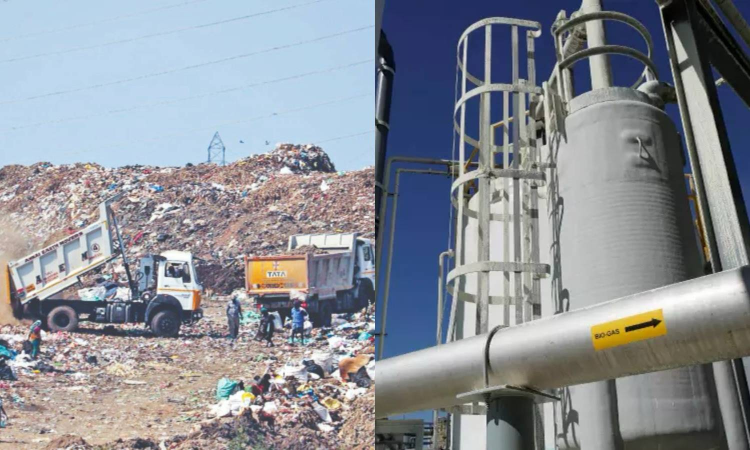Kilpauk resident shows the way with zero-waste biogas model
A sustainable alternative to GCC’s proposed WtE project at Kodungaiyur dumpyard

Kodungaiyur dumpyard; a biogas plant (File photos)
CHENNAI: At a time when the Greater Chennai Corporation (GCC) is pressing ahead with its plans to set up a large-scale waste-to-energy (WTE) incinerator at the Kodungaiyur dump yard, a Kilpauk resident is quietly showcasing a sustainable and decentralised alternative.
For over 20 years, Suresh has been converting the biodegradable waste generated in his household into biogas, which he uses for cooking and other domestic needs.
His home-grown system, entirely independent of LPG, offers a replicable zero-waste model that environmentalists say could significantly reduce the city’s landfill burden and harmful emissions if adopted widely. “I haven’t bought an LPG cylinder in more than 20 years,” Suresh told DT Next. “The system is simple. Kitchen waste is fed into a digestion drum along with cow dung. This produces biogas, which is stored and piped into my kitchen for daily use.”
Apart from producing clean energy, the residue from the biogas system is used as organic fertiliser in his terrace garden, where he cultivates over 100 plants, including vegetables. “The process is self-sufficient and eco-friendly,” he added.
Suresh has also helped several individuals and institutions set up similar systems. “Anyone can set up a household biogas plant with around Rs 35,000. It’s both cost-effective and practical,” he said.
M Jagadesh of Greener Bio, an enterprise that promotes biogas adoption, said biogas systems were more suitable for individual houses than apartment complexes. “Such systems require source-level segregation and daily commitment. In apartments, unless every family is willing, community plants won’t be viable,” he said.
Jagadesh, who left a State-owned public sector job to pursue his passion for sustainable energy, added that the average biogas plant required no more space than a washing machine or a 500-litre water tank. “A plant for a family of three to four starts from Rs 20,000, depending on the volume of waste generated,” he explained. “Typically, a household generates 0.5-1 kg of solid wet waste and 3-4 kg of liquid waste daily. From 5 kg of wet waste, we can produce 150-200 grams of methane, enough to extend LPG cylinder use by 15 to 20 days.”
He also pointed out that biogas was a much safer fuel than LPG. “Methane has a lower density than air and disperses quickly into the atmosphere if leaked. In contrast, LPG, being denser, tends to linger near the ground, making it more hazardous in case of a leak,” Jagadesh noted.
As an alternative to the GCC’s proposed incinerator project, the Federation for North Chennai Residents Welfare Association has proposed the Green Chennai Initiative (GCI), which aims to make the city India’s first people-centric, zero-waste metropolis.
“One of GCI’s key goals is to process at least 30% of the total wet waste at source through composting or biogas plants,” said TK Shanmugam, the federation’s president. “We’re mobilising volunteers as green ambassadors at the ward level to raise public awareness and promote household-level waste solutions.”



